Choosing the Right Dog Brush

Though we all know the basics for taking care of our dogs (walking, feeding, etc.), grooming may be one of the most crucial aspects of the entire process.
With a proper grooming schedule and technique, you will be able to drastically improve your pet's quality of life by maintaining a healthy coat, eliminating fleas and ticks, preventing excess shedding, and even identifying potential health conditions.
Of course, to do so, you'll need to dog brush to help you get the job done properly. So, in this article, we'll tell you everything you need to know about choosing the right dog brush to keep you and your furry friend happy for years to come.
Factors to Consider
As with most pet products, not every dog brush is built the same way. There are a few key considerations you'll need to keep in mind as you browse for the best brush for your pup.
So, if you want to ensure you make the best possible choice, be sure to remember the following factors.
Coat Type
Different dog breeds are born with different kinds of coats – each of which has unique needs when it comes to brushing. As such, you'll need to identify what type of coat your dog has before looking for a brush. Some of the common ones you'll encounter include:
Smooth Coats
These hairs will be short and silky, lying close to the body with no undercoat. Dalmations, Doberman Pinschers, Bulldogs, Boston Terriers, Weimaraners, and Greyhounds will have this type of coat.
Long Hair
Boasting some of the most rigorous grooming requirements, dogs with long and silky or coarse hair need regular upkeep to prevent matting. Some common breeds with long hair include Yorkshire Terriers, Maltese, Afghan Hounds, and Shih Tzus.
Curly Hair
This type of hair also calls for consistent grooming, as dogs with curly hair need to keep their ringlets in top shape to eliminate dirt and matting. Breeds that may have curls include Bedlington Terriers, Portuguese Water Dogs, Poodles, and Bichon Frises.
Double Coat
Also known as an undercoat, this type of coat features a shorter, denser coat directly underneath its outer counterpart. Breeds that have double coats include Australian Shepherds, Border Collies, Labrador Retrievers, and Golden Retrievers.
Brush Type
Now that you've identified which type of coat your dog has, you can start looking for the brush that'll best help your grooming efforts, rather than work against them. Read the following list to discover which brush belongs in your grooming kit:
Slicker Pin Brush

Slicker Pin Brushes, like the JW Gripsoft Slicker Brush for dogs (shown above), are best for dogs with medium to long hair or dogs that hair curly hair like Wire Fox Terriers, Golden Retrievers, Border Collies, or Golden Doodles. These types of brushes have short pins that are placed close together on a flat surface. The pins are able to get up under your dog's coat so that you can brush out any tangles or mats and remove excess fur.
When removing any tangles or mats from your pet's fur, remember to be gentle. These can sometimes be painful and you could accidentally give your dog a bald spot from pulling too hard. Instead, start at the edge of the mat and work your way towards the center of the tangle. If it's too matted and won't release no matter how much you've tried, you may have to cut the mat off with scissors. Brushing your dog every couple of days will help prevent mats from happening. Just remember, if you use a slicker pin brush, be gentle and do not press down too hard as it could cause discomfort for your dog.
Deshedding Rakes

For dogs with thick coats like German Shepherds, Chows, or Westies, you'll need a Rake, especially during shedding season. Rakes, like the JW Gripsoft Dematting Rake (shown above), are designed to really get up under your dog's topcoat and remove any dead undercoat, excess fur, dander, and dirt that can get trapped in your dog's coat. Rake brushes for dogs typically have large, long metal pins that are set apart evenly. The pins get very close to your dog's skin so it's important that you do not press down too hard while you brush with a rake. When purchasing a de-shedding rake dog brush, you'll want to make sure that the metal pins are about as long as your dog's fur. Too short and it won't be able to reach your dog's undercoat. Too long and it could irritate your dog's skin.
Pin Brushes
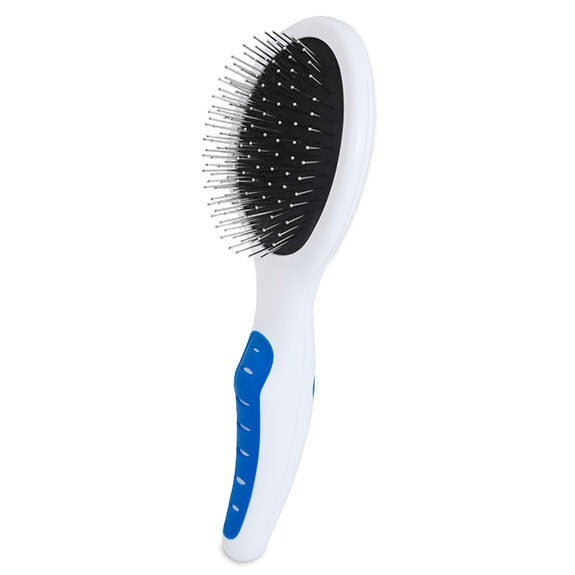
Pin Brushes like JW's Gripsoft Pin Brush (shown above) are good for almost any coat type and are typically used during the last step of the grooming process. Pin brushes look the most similar to brushes humans use for our hair. Groomers usually use this style of brush to fluff your dog's coat during the final step of the grooming process.
Combs
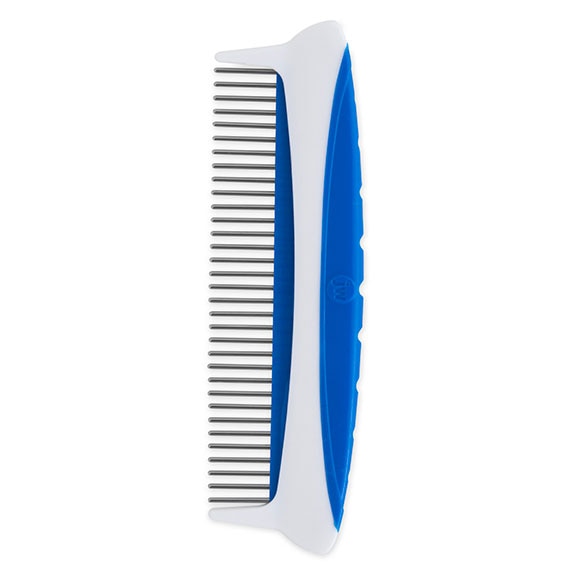
For dogs with long, thin, straight hair, it's recommended that you use a comb. Combs for dogs are similar to combs for humans, except dog combs have metal pins instead of plastic pins. Depending on how thick or thin your dog's coat is, combs come in a variety of sizes with spacing between each comb tooth varying. If your pet has a lot of tangles, try starting off with a comb that has teeth that are more spread apart. As you work out the tangles, switch to a comb with teeth that are spaced closer together. This will ensure a tangle-free coat and a happy dog.
How to Groom Your Dog
Now that you've nailed down the perfect brush for your dog, it's time to put it into action. Maintain proper grooming practices by following these steps:
1. Find a Location: Calm, safe places your dog is comfortable with will help them be more relaxed and willing to stay still.
2. Use the Right Technique: Read the instructions on your brush to ensure you're using the tool correctly and prevent accidentally hurting your dog.
3. Consider Using Products: Some items, like coat conditioners, can make the process easier by detangling hair and loosening dirt prior to your first brush stroke.
4. Start from the Bottom Up: Working from the tail to the head is thought to help dogs remain calm throughout the process.
5. Be Consistent: Dogs like schedules! Try to brush your dog on the same day each week (or every other week) and follow the same technique each time to reassure your pet.
Summary
Grooming your dog and brushing their coat is an important part of being a responsible pet parent. Veterinarians recommend that you brush your dog's coat every couple of days, or at least once a week. Not only will it make your dog look better, but it will also keep your dog's coat healthy and shiny, keep your home free and dander and fur, and activate your dog's natural oils in their coat.
Find all of JW Grooming Brushes for dogs here. Having the right type of brush will make the grooming process easier and more enjoyable for your dog.
Previous article
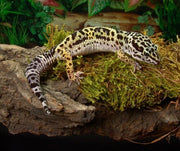
Next article
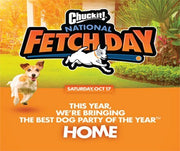
Related posts
View all-

5 Simple Tips to Make Sure Your Cat Drinks Enough Water
Ensuring your cat stays hydrated is important, but it can be challenging since many cats don't drink enough water. Dehydration can lead to kidney disease and other health issues. Fortunately, you can encourage your cat to drink more with a few simple changes. Read Article -
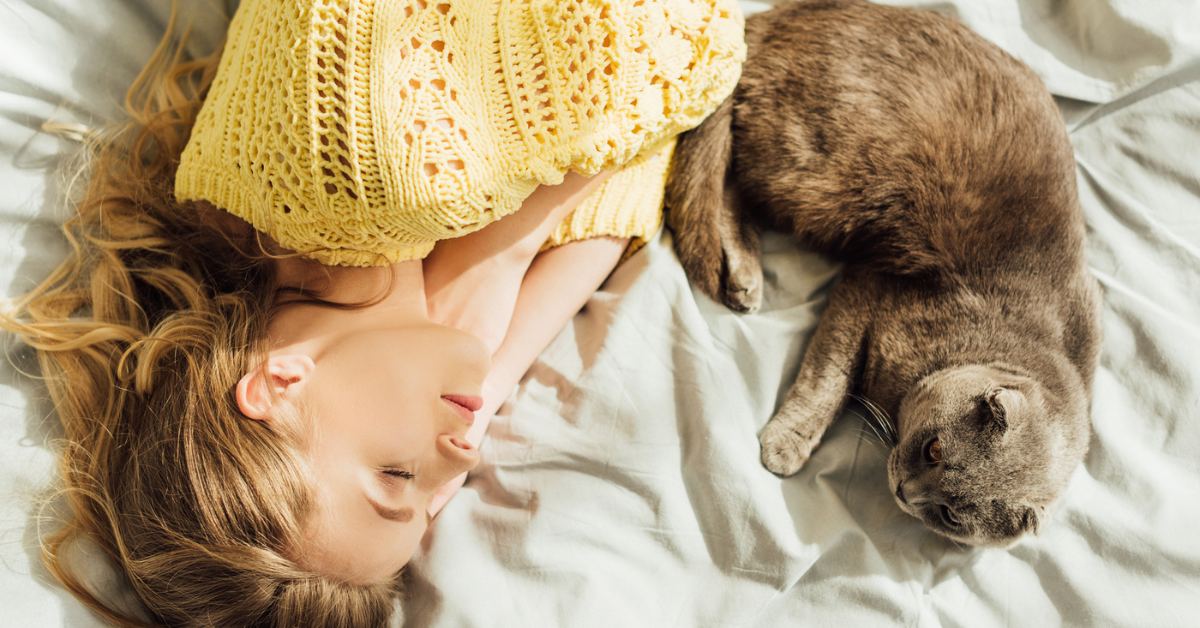
How to Keep Your Cat Busy at Night (So You Can Sleep)
For many cat owners, the quest for a good night's sleep while keeping their feline friends content and engaged can seem like a never-ending battle. Cats, naturally more active at night or early in the morning, often disrupt your sleep schedules with nocturnal activity, whether through playful nature or seeking attention. Read Article -
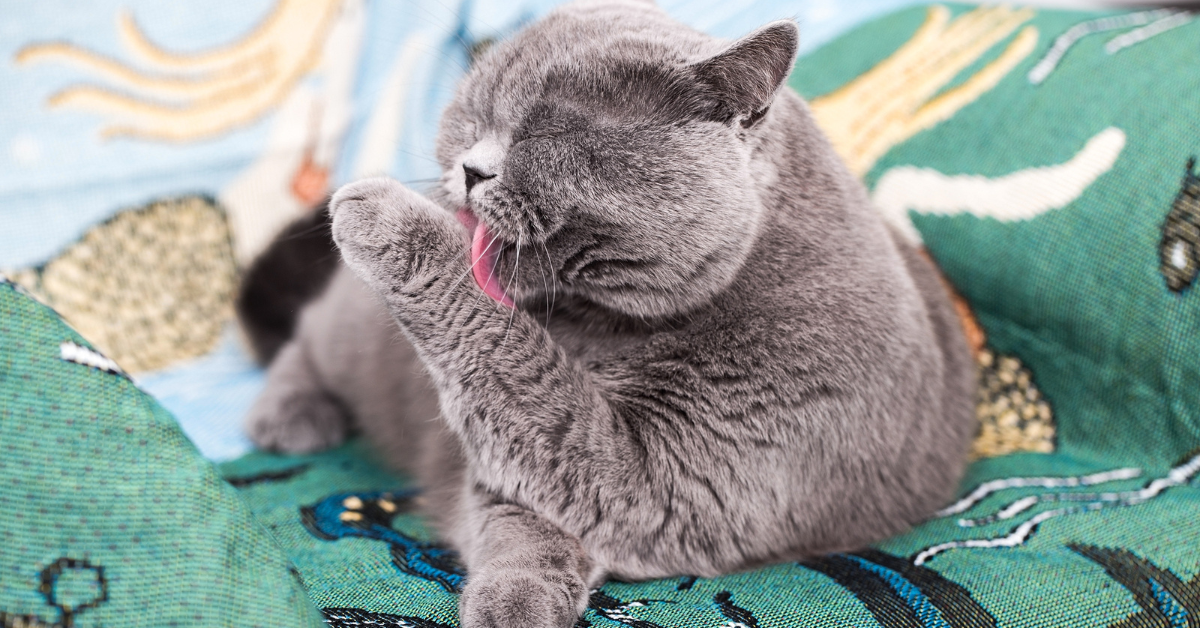
Should You Bathe Your Cat? Everything You Need to Know About Cat Hygiene
When it comes to cat hygiene, a common question among cat owners is, "Should you bathe your cat?" Understanding how to care for felines, especially bathing cats properly, is crucial for maintaining their overall health. Most cats are fastidious groomers, but specific scenarios like long-haired cats getting dirty or skin irritations, might require a bath.
Read Article



